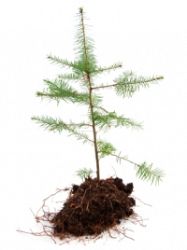

Which Christmas tree is the greenest choice for the environment?
Whilst most Christmas trees are now raised on established farms (meaning deforestation is not an issue), they require pesticides, are often shipped long distances and end up taking up landfill space.
Conversely, artificial Christmas trees are typically made in China, from oil-derived, pollution-releasing polyvinyl chloride (PVC) and some have been found to contain lead. Moreover, artificial trees last for centuries in landfills.
Artificial tree advocates denote that a one-time fake tree purchase can save fuel otherwise used for annual trips to a tree farm or shopping centre, not to mention the cross-country shipping of the tree to point of sale.
If the fake fir is kept for many years, the oil savings could add up to more than it took to make and ship in the first place. However, people all too often upgrade to a fancier tree, or abandon their old one after a period of time.
Nevertheless, the greenest option depends on a number of factors, including where you live, how you celebrate and precisely what you buy.
Going with a real tree? Choose something locally and organically grown. You will cut down on carbon dioxide emissions and help prevent the environmental degradation wrought by pesticides on big conventional operations. When you are finished with your tree, make sure it is converted to mulch or compost.
Going with an artificial tree? Try to find one made in the UK, which greatly decreases the chances for contamination with lead or other toxins, preserves domestic manufacturing jobs and reduces shipping. If you must get rid of your artificial tree, check with local charities, shelters and churches to see if they can use it. Most recycling programs do not accept them, and they take many years to degrade in landfills.
Want an even greener option? Buy a living, plantable "bulb" tree. Inside, the tree can wear ornaments and garland, and after Christmas it can be transplanted outdoors. You'll be adding to the planet's lungs and fighting global warming, as well as providing wildlife habitat. If you don't have room for an evergreen, see if you can donate it to someplace in your community.